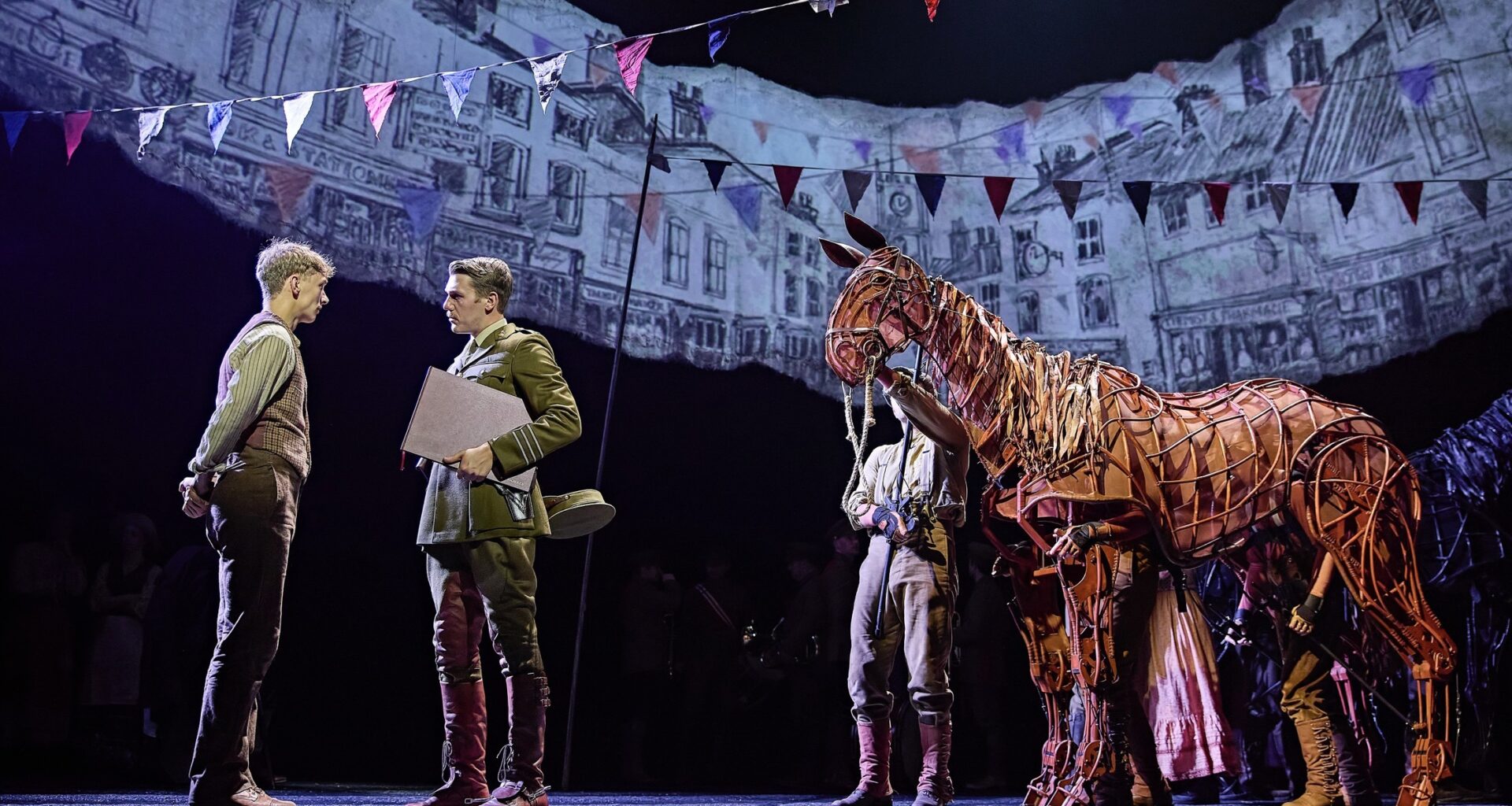Writer: Michael Morpurgo
Adaptor: Nick Stafford
Director: Tom Morris and Katie Henry
Is it possible to become totally emotionally invested into what happens to a puppet?
Given the right setting, the right puppetry and, most importantly, the right storytelling then yes, absolutely. The original production of War Horse might have been nearly twenty years ago now, but anyone who was lucky enough to see that will no doubt remember the effect it had, both on theatre in general and on themselves. It was groundbreaking stuff at the time, and even though in the intervening period puppetry has become more common in hit productions, the impact of seeing what are totally believable animals on the stage remains. There’s an audible gasp from the audience when adult Joey first appears through the gloom at the back of the stage, just as there was at the first performance in 2007.
This is, without doubt, an extraordinary piece of theatre. The puppets designed by Handspring Puppet Company are incredibly lifelike, but that’s only part of the story. It’s the way they behave, the small movements, the actions and reactions that make a difference. It’s also partly improvised – they have their basic movement planned and rehearsed but will respond to other influences too. A sudden noise, a cough from the audience, and the horses respond just as a real animal would. The skill and teamwork of the puppeteers in creating this effect are incredible. At this performance, we were treated to Tom Quinn, Lewis McBean and Michael Larcombe as Joey, with Tea Poldervaart, Robin Hayward, and Gun Suen playing Topthorne. They’re part of a team of twelve who perform in rotation at different performances, carrying the weight and manipulating a puppet that weighs 70 kilos plus the weight of the actors on their backs from time to time, and doing it so beautifully that you forget there are people there.
The puppets may well be one of the main reasons people want to see the show, but the overall effect is created by far more than them. It’s a real team effort between the creative departments and the cast. As is almost always the case, lighting (designed here by Paule Constable) is key, and essential to making the show work, with the video and sound making their own contribution to understanding time and place. The writing is compelling, and the storytelling is impeccable with Michael Morpurgo’s book and Nick Stafford’s adaptation skilfully delivered by a large cast. There’s a well-judged performance from Tom Sturgess as Albert – caring, upset and determined, with a believable bond between him and Joey. Karl Haynes is a suitably foolhardy drunkard as his father Ted, with Jo Castleton as Albert’s mother Rose, frustrated with her husband and worried about her son. There’s good work too by Alexander Ballinger as Captain Friedrich Muller, who cares more about the welfare of the animals than he does about winning the war, with singing beautifully delivered by Sally Swanson, adding yet another layer to this multi-faceted production which serves again as a reminder that the victims of war are invariably the innocents who don’t want to be there and are just hoping to survive.
What was one of the most daring and original productions that the National Theatre has ever produced has gone on to become a global phenomenon, working just as well on the stage at the Alex as it did in the vast space at the Olivier. It’s sheer theatrical magic. Unmissable.
Runs until 19 July 2025 and on tour
